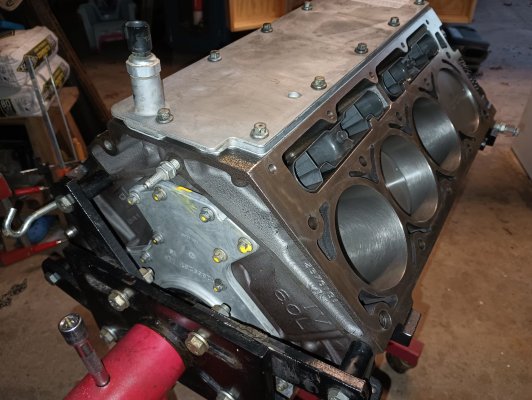Hi all,
2012 Yukon XL Denal 6.2
Thought I'd come here for advice, maybe this has happened to someone on here.....
I tried replacing the oil sender unit today due to drops in oil pressure to 0. I used a swivel rachet attachment and an oil pressure unit socket along with a long 3/8 socket wrench. Unfortunately, while loosening it, the thread broke from the head of the bolt and now the thread is stuck inside the slot. I did this without removing the intake or anything else so there is very little room back there. I have never replaced this before on this truck, but the truck did get a new engine approximately 3 years ago because of a lifter failure related to the afm.
I don't have experience extracting bolts, but am decent at conducting research and trying things though. Hoping yall here would be familiar with the layout of this car and help me brainstorm some ideas to try.
The sending unit seems like a softer metal (aluminum?). Because of this, I was worried about using an easy off type thing which I read is better for hard metals. Considered a reverse drill, but the room is limited especially with intake still in place.
Thought about removing the intake and seeing how much more room that would give me to try out something.
Any thoughts?
Thanks in advance for any input.
2012 Yukon XL Denal 6.2
Thought I'd come here for advice, maybe this has happened to someone on here.....
I tried replacing the oil sender unit today due to drops in oil pressure to 0. I used a swivel rachet attachment and an oil pressure unit socket along with a long 3/8 socket wrench. Unfortunately, while loosening it, the thread broke from the head of the bolt and now the thread is stuck inside the slot. I did this without removing the intake or anything else so there is very little room back there. I have never replaced this before on this truck, but the truck did get a new engine approximately 3 years ago because of a lifter failure related to the afm.
I don't have experience extracting bolts, but am decent at conducting research and trying things though. Hoping yall here would be familiar with the layout of this car and help me brainstorm some ideas to try.
The sending unit seems like a softer metal (aluminum?). Because of this, I was worried about using an easy off type thing which I read is better for hard metals. Considered a reverse drill, but the room is limited especially with intake still in place.
Thought about removing the intake and seeing how much more room that would give me to try out something.
Any thoughts?
Thanks in advance for any input.

